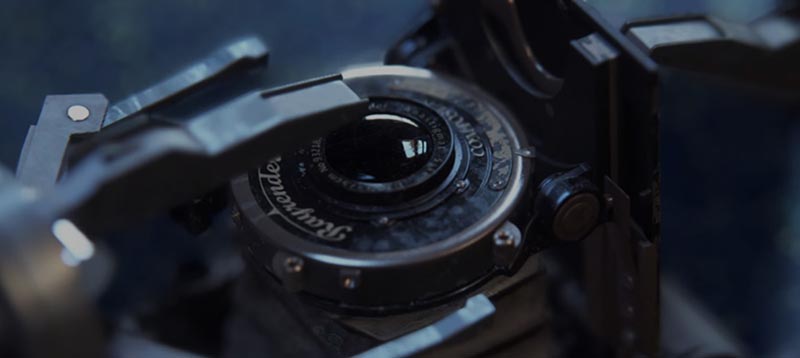Enlighten streamlines open world games with World Partition in Unreal Engine 5
July 24th, 2025
Enlighten 4.03.P1: Major Improvements in Unreal Engine Integration
In May 2025, the Enlighten team released their latest patch, Enlighten 4.03.P1. This release focuses on integration with Unreal Engine, as well as a variety of feature enhancements, such as improved compatibility with Lumen Reflections and MegaLights.
A key highlight of this release is the official production-ready support for World Partition, graduating from its previous beta status. Starting with Enlighten 4.03.P1, developers can now efficiently set up Enlighten in games using World Partition, enabling easy integration of high-quality, low-overhead global illumination (GI) in real-time.
 |
 |
 |
In this article, we’ll demonstrate how the new features introduced in 4.03.P1 can be effectively utilized when configuring Enlighten for World Partition enabled scenes in Unreal Engine 5.
Enlighten Configuration Overview
Before diving into a practical example of Enlighten usage in a World Partition scene, we’ll briefly review some of the key configuration settings. If you’re already familiar with Enlighten and its workflow, feel free to skip this section.
Enlighten provides high-quality, real-time global illumination with low performance overhead across a wide range of platforms—from high-end to low-end devices. However, in large-scale scenes, such as open world games, proper setup of individual objects becomes crucial. Without careful configuration, you may face slow iteration during preprocessing or experience degraded runtime performance.
Among the most impactful factors are lighting mode and lighting resolution. Please refer to our tutorial for an overview of the basic scene setup, which includes these settings.
In this article, we’ll take a closer look at lighting resolution in particular.
Lighting Resolution
Lighting resolution determines the indirect lighting precision applied by Enlighten. To balance visual quality and performance, it is essential to set the appropriate resolution for each object.
For objects using the Contribute Lightmap lighting mode, resolution is configured using the Enlighten Quality property. The following general guidelines can help achieve a good balance:
- High - For objects in narrow indoor spaces or where high-precision indirect lighting is required
- Medium - For large surfaces such as walls, or objects that are frequently viewed up close
- Low - For distant objects like rooftops or cliffs that the player won’t approach
- Background - For very distant background objects
When using probes for lighting, the resolution is controlled via the Enlighten Adaptive Probe Resolution property. This value determines the spacing of probes around an object. Suggested settings include:
- Full - For high-quality lighting or to prevent light leaks
- 1/2 or 1/4 - For objects that are moderately close to the camera
- 1/4 or 1/8 - For objects that are not prominently visible on screen
- 1/16 - For far-away terrain or mountains
Even lower-resolution options (1/32, 1/64, 1/128, 1/256) are also available and particularly useful for large-scale open worlds.
In practice, setting resolutions per actor can be cumbersome. Instead, use default level settings to broadly define resolution across scenes. Set medium resolution as the baseline, apply low resolution to levels with mostly distant or rarely visited areas, and assign high resolution to specific actors in regions where greater accuracy is needed. To increase probe resolution locally, consider using an Adaptive Probe Volume.
In the following sections, we will walk through how to configure lighting resolution in vast scenes that use World Partition, using concrete examples and screenshots for clarity.
Resolution Settings in World Partition
Traditionally, Enlighten relied on sublevels to manage resolution settings. However, World Partition scenes do not use sublevels, making it difficult to apply broad-level resolution configurations. These scenes are typically vast with a great many assets, and the lack of level-based configuration can significantly increase setup costs. To address this, Enlighten now supports resolution settings per World Partition grid cell.
Resolution for each object is determined as follows:
- If an actor has no explicit resolution setting, it inherits the value from its grid cell.
- If the grid cell also lacks a setting, the value is inherited from the world defaults.
To inspect the final applied values, check the actor’s Computed Quality and Computed Probe Resolution properties.
| From Actor | From Cell | From World |
|---|---|---|
 |
 |
 |
In Enlighten 4.03.P1, a new interface allows you to easily select multiple grid cells via the minimap and apply resolution settings in bulk. This operation is both practical and efficient, as adjacent areas often share similar object properties.
| Enlighten Cell Quality | Enlighten Cell Probe Resolution |
|---|---|
 |
 |
You can assign values either per cell or per region.
| Per Cell |  |
 |
|---|---|---|
| Per Region |  |
 |
Grid cell values can also be adjusted directly from an actor’s detail panel, giving your workflow more flexibility during setup to better accommodate any specific scene layouts.
By default, World Partition scenes start with Medium (1/4) resolution. This works well for most areas where the player will move around. For open or inaccessible areas, use Low (1/16), and for extremely distant regions (e.g. the edges of the world), use Background (1/64) for optimal efficiency.
Enhancing Open-World Development in UE5 with Enlighten 4.03.P1
In addition to the features covered in this article, Enlighten 4.03.P1 introduces many other improvements to streamline workflows when using World Partition in Unreal Engine 5. With these updates, Enlighten is now well-suited for real-world production environments built on World Partition. Developers building open-world games are encouraged to explore Enlighten 4.03.P1, which provides efficient, real-time global illumination for large-scale environments.
-

Mizuchi is a 3D CG rendering engine that aims to achieve
the highest quality in real-time visuals.
Mizuchi Official Site -

YEBIS is the only post-effects middleware technology in the world that allows you to utilize various effects in post process with live action video or CG real-time visuals.
YEBIS Official Site
Free Trial / Purchase / Inquiry
■Contact Form
■Contact Number
TEL +81-3-5488-7481






